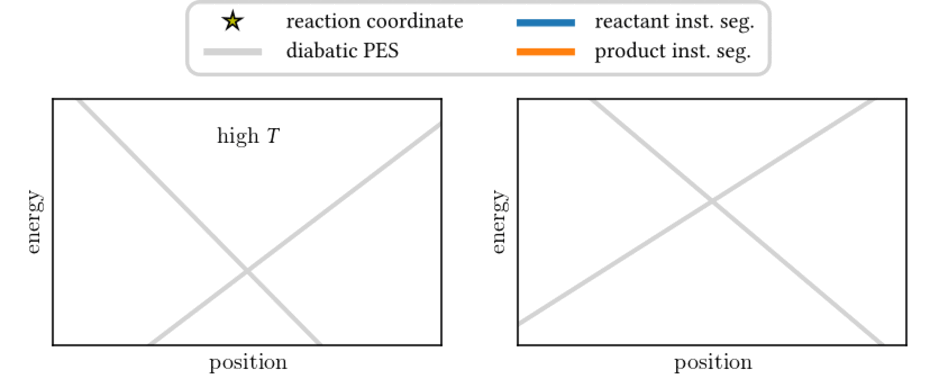Rates beyond the Golden Rule - a new semiclassical theory of nonadiabatic reactions
The Born−Oppenheimer approximation is often used (and often useful) when modelling chemical processes. However some reactions, termed “nonadiabatic”, cannot be adequately described within this framework and require alternative treatments. At present there is no general nonadiabatic rate theory that is computationally feasible outside of model systems. Nevertheless considerable progress has been made in important limiting cases with the advent of semiclassical golden-rule instantons and related techniques. In our recent publication, we push the boundaries of this semiclassical approach and gain new insight into how electronic nonadiabaticity and nuclear tunnelling combine to influence the rates of chemical reactions.
Fermi’s Golden Rule is the first term in a perturbation series expansion of the exact nonadiabatic rate. Our new theory describes a practical way of calculating the second term in this series—a worthwhile endeavour, since it makes possible a rigorous assessment of the accuracy of the golden-rule approximation. In systems where the golden rule proves to be fairly inaccurate (but that are still far from being Born−Oppenheimer), the new term can be used to refine the approximation and produce a much more accurate estimate of the true rate. Additionally, our new theory a priori identifies the processes influencing the reaction mechanism away from the golden-rule limit. These fall into three categories: (i) changes in reactant and product zero-point energies; (ii) recrossing events; (iii) softening of the activation energy barrier, resulting in enhanced tunnelling probability. Importantly, the corresponding correction factors can all be calculated using little more than the information already available from a standard golden-rule instanton optimisation, making for a highly practical simulation method as well as a promising framework for future theoretical developments.

George Trenins and Jeremy Oliver Richardson, "Nonadiabatic instanton rate theory beyond the golden-rule limit", J. Chem. Phys. (in press) (2022)George Trenins and Jeremy Oliver Richardson